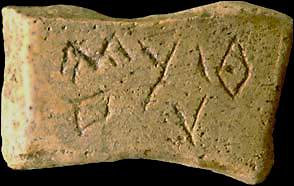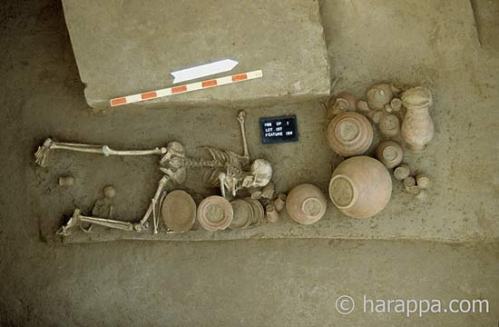After being (quite rightly, it seems) told off by one of my commenters after claiming proto Indo European was 9,000 years old and from Anatolia, I decided to spend a day doing some digging into the subject. Okay Maju; now I get why the Anatolian hypothesis and 9,000 year old date is lame.
Reason 1
First of all there’s the dating. The technologies that date PIE are the wheel, the axle and metal working terms that include gold and white metal (tin or silver). And this rather solidly sets the oldest possible date for PIE anywhere to be 5,500 years old. Anatolia 9,000 years ago is just right out, and I’m embarrassed now that I thought it was correct.
Reason 2
The appearance of the horse and apple, both domesticates from Kazakhstan that hadn’t spread very far by 5,500 years ago, and both are words in PIE. In fact, both domesticates seem to have expanded into Europe and Mesopotamia together, and share an arrival time in Persia with Indo European languages, at about 2,000 BC. The plum also originates from near the Caspian sea, and seems to follow a similar route.
Reason 3
A look at some of the other PIE words showed they had agriculture and a range of domesticated Anatolian/Iranian animals, which eliminates the Botai culture that seems to have domesticated the horse about 5,600 years or more. They had to be in an area about 5,000 to 5,500 years ago that had access to horse, apples and the wheel, and that area of overlap was pretty small, and it didn’t include anywhere West of the Black sea or further East than central Kazakhstan.
Reason 4
The expansion of the IE language group very closely matches the spread of the horse and the apple. IE arrives in Persia about 4,000 years ago, and so do the horse and apple. The arrival of the horse in the Takla Makan also ties with the arrival of the Indo European Tocharians, and it can be seen spreading into Europe, reaching the Mycenaeans about 3,700 years ago, also bringing the horse.
Reason 5
I took a good look at the terms describing the PIE homeland. There are several words meaning sea, lake and shore, and several for mountain or hill. There are quite a few terms describing trees of various species; yew, beech, willow, birch, fir, ash, oak/hornbeam; all of these describe a fairly cool environment. There’s also a word for snow, and one for ice. Wherever they lived had big lake/seas and boats, as well as mountians. It also knew bears, wolves and and lions (lions used to be seen all through Eurasia and Africa). There have been attempts to put words like monkey and elephant into PIE, but these seem to be Semitic loan words. Leopard however, may deserve a place, as these are found in mountainous areas in the Caspain/Black Sea area. The flora suggests somewhere cooler than Anatolia.
Reason 6
PIE shares some terms with both proto Semitic and proto Finno Ugric, suggesting it was geographically close to both at one time. The proto Semitic terms it shares are primarily agricultural, like bar (grain), tauro (bull) and waynu (wine), which suggests that the transmission of the words into PIE was pretty early. As a side issue, the placing of goats and sheep in proto Semitic makes an African origin for PS a bit unlikely; as does the transmission of PS words into PIE (which has never been near Africa).
Reason 7
The dates IE languages appear. They appear with the Tocharians 3,800 years ago, in Mycenae 3,700 years ago and in Persia about 4,000 years ago. This suggests a central distribution point somewhere just North of the area between the Black and Caspian seas, assuming the expansion moved at a roughly equal speed in all directions. However, it does narrow down the search area, and it seem to be unlikely to be anywhere further West than the Black sea, or South of Iran. This likely area is also close to a proposed area for proto Finno- Ugric, the Volga area.

Dates for the appearance of Indo European languages at Mycenae, Takla Makan and Persia. The shaded area is my most likely area of origin solely from the dates and distances. Proto Indo Iranian is thought to date to 4,500 BP in the Northern part of Iran.
A slightly more southerly part of this area, the trans-Caucasus, would have been one of the first areas to have both the wheel and domesticated horses. They also had a mountainous terrain, and access to great quality arsenical copper.

Wheel/Horse area overlap at 5k ago shaded in blue.
This area is also mountainous; and home to willow, birch,yew and hornbeam trees. It even has a leopard native to it (suggested but not proven as a PIE word). The best match I can find for the flora is on the Black Sea coast of the trans-Caucasus area around Krasnodar, so pretty much the area that was picked for the Kurgan hypothesis, just slightly more into the mountainous areas to the South. I’m not pro the steppes areas in the more Northern possible zone as a homeland, as these wouldn’t account for the plethora of sea/boating related terms, or the trees, or the mountains. These people had plenty of words for mountain and boating, and the steppes, by their nature, are flat, fairly treeless and not easy to sail on.
I’m not sure that the expansion was so much due to direct military conquests as the wheel and horse combo giving them the edge in many areas; agriculture, trade, war… you name it, the cart/chariot has a lot of uses. Wherever Indo Europeans arrive you see horses arrive at the same time.
So what I’m now looking for is a culture dating from 5,500 to 5,000 years ago in the North trans-Caucasian area. There are a few possibilities, but the Maykop culture fits the time and place and geographical/flora and fauna perfectly. I’m investigating them today. So far I haven’t had a good look at the genetic evidence dated to the era, but that’s next on the list of things to check.
I’ve learned a few other things researching this, mainly to do with proto Semitic. These are that:
- Proto Semitic wasn’t African in origin (I never thought it was, but it’s a nice confirmation), and seems to have radiated out from Anatolia/Iran with the Neolithic expansion, with PIE neighbours.
- That Elamite (extinct Semitic) is related to Dravidian.
- Languages can expand almost explosively, and can die out just as quickly.
- There’s probably a good reason for the Celtic langauges having an Afro Asiatic language structure, which has nothing to do with North Africa. It would seem quite possible that the first farmers who expanded into India and Europe all spoke an AfroAsiataic language, which was then swallowed by IE (a mirror of what happened in India with Dravidian).
Not a bad day’s research..

























